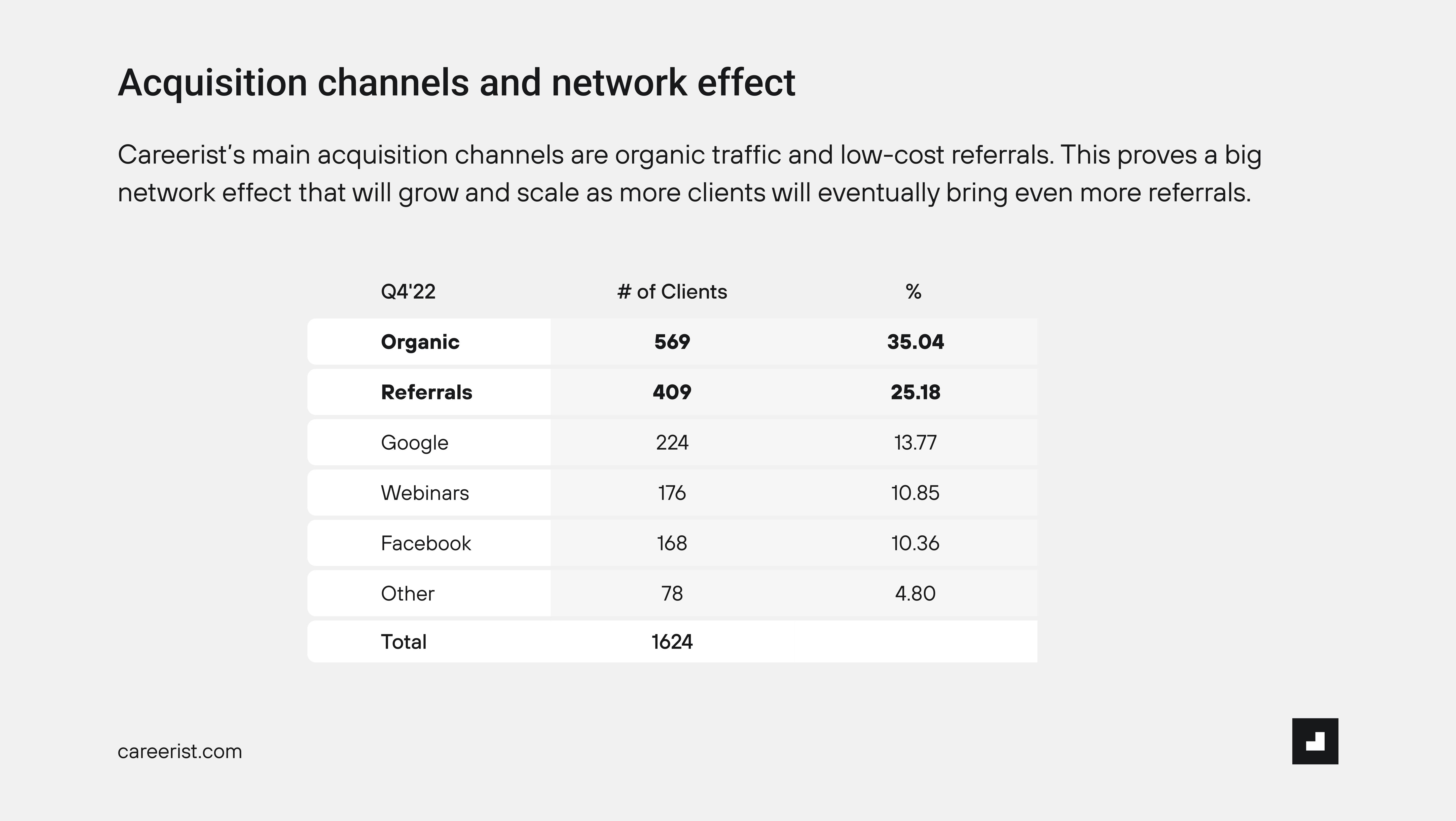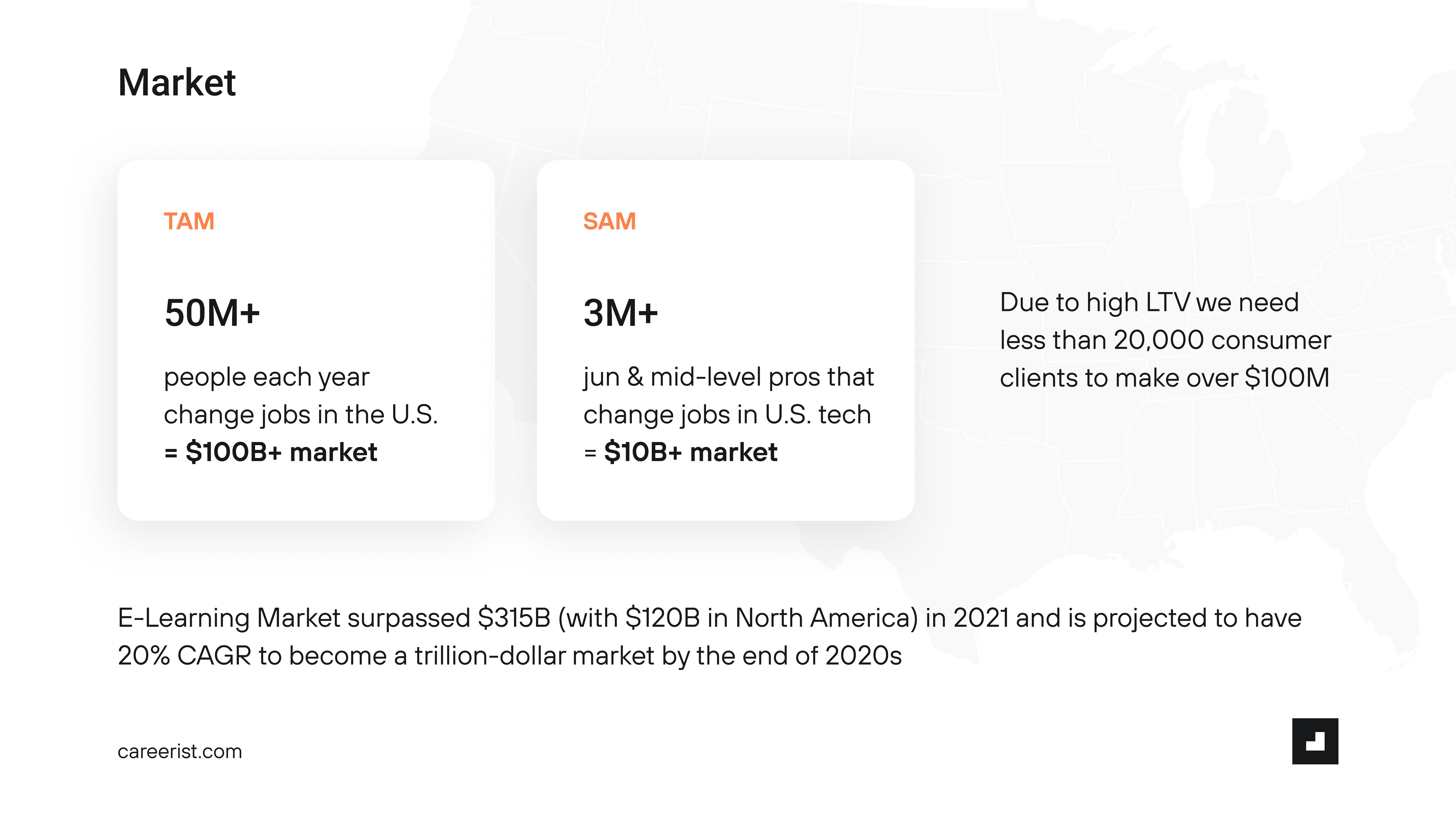Careerist claims it closed an $8 million round of funding with a tight 12-slide deck and gave us a lot to learn from in the process. Not all in good ways, but I’m getting slightly ahead of myself.
We’re looking for more unique pitch decks to tear down, so if you want to submit your own, here’s how you can do that.
Slides in this deck
The team submitted this slide deck with the note that it was submitted exactly as it pitched it to the investors.
- Cover slide
- Mission slide
- Problem slide
- Solution slide
- Traction slide part 1
- Traction slide part 2
- Business model slide
- Go to market/customer funnel slide
- Client rating and net promoter score slide
- Market slide
- Team slide
- Thank you slide
Three things to love
What can you do to gain a foothold in the market? What are your marketing and customer acquisition channels? This question is only partially answered by Careerist, and that worries me a little.
This deck sets off a number of alarm bells for me — I’ll get to why in just a moment — and I imagine the founding team fought an uphill battle pitching this to investors. Having said that, the company did go through Y Combinator and claims it was successful in raising an $8 million round from Cathexis, Xploration, Cold Start Ventures, Grant Park Ventures and others. Let’s dig in and look to see if we can find some clues as to why the company caught the eye of these investors.
If you have traction, nothing else matters
[Slide 5] Traction is king. Image Credits: Careerist
Traction truly resolves any issues a company may possibly have. Building a company that is growing from half a million dollars to $12 million of revenue in four years is pretty impressive, especially given that up to this point, according to its own press release, the company had raised just $1.2 million of capital. Turning $1.2 million of investment into $12 million of revenue, it turns out, is enough to catch the attention of investors.
Extraordinary customer acquisition
In order to drive that much revenue, you’ve got to find your customers somewhere, and it seems like Careerist cracked that nut:

[Slide 8] That’s some serious growth hacking there. Image Credits: Careerist
On its slides, the company claims that it gets 35% of its traffic organically and another 25% from referrals. Those are two extremely powerful, low-cost acquisition channels that can drive extraordinary, high-value customers. But that’s a double-edged sword. Referrals generally do scale well alongside other channels: If you get a 0.2 referral on average per customer, and you acquire 10 customers, you get two “free” customers due to referrals. The challenge is with the organic traffic, which is much harder to scale on demand. In other words, once you close an $8 million round of funding, how are you going to accelerate your sales dramatically?
It doesn’t specify whether the other channels (Google, webinars and Facebook) are paid acquisition channels. If they are, I’d expect to see the cost of acquisition (CAC) here, and an analysis on whether these customers also end up referring additional customers. But overall, there’s a lot to love on this slide: Finding 1,600 customers who are paying you $12,000+ each (see slide 7 in the slide deck, below) is objectively impressive.
The cool thing is, you can sense-check those numbers: The company claims that it has 1,600 customers and has done cumulative $19 million of revenue. That works out to around $12,000 per customer, proving that the numbers are internally consistent.
That’s a hell of a market size

[Slide 10] E-learning is huge, finding jobs is popular and hiring the right staff is crucial. That all adds up. Image Credits: Careerist
Careerist finds itself in a curious space here, with a huge opportunity. In fact, if the company wasn’t seeing extraordinary traction and lifetime value (LTV), these numbers would be hard to believe. But with the traction in place, these numbers seem more or less plausible. Besides, in truly enormous markets (hiring, training, etc.) market sizing is essentially just a checkbox.
One example of that would be toothpaste: There’s no doubt that there’s a huge market for it, and no investor will argue with you about that. The questions then become “What can you do to gain a foothold in those markets?” and “What are your marketing and customer acquisition channels?” Careerist only partially answers those questions, and that worries me a little.
The above are some of the positives in the Careerist pitch deck, but unfortunately, there are also a few Texas-sized red flags that make me wonder how the company was successful in raising money at all. I suspect the answer, as I alluded to above, is because of its traction. In the rest of this teardown, I’ll take a look at three things Careerist could have improved or done differently, along with its full pitch deck.
Pitch Deck Teardown: Careerist’s $8M Series A deck by Haje Jan Kamps originally published on TechCrunch













